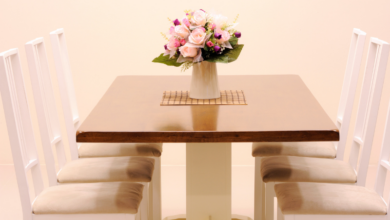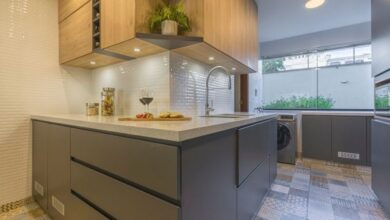Montessori Children’s Room: Ideal spaces to support independence and learning

Today, Montessori pedagogy is supported in its approach by parents. This educational method, which promotes the growth and development of children from birth, is characterized by an independent learning style. In this article, you will learn how to set up a Montessori nursery that represents the important point of Montessori education for your child.
Make sure your children grow up in a safe and motivating environment Montessori children’s room By doing this, you can allow them to freely explore themselves.
In this article, we as the Bellona editorial team have prepared something specifically for you: Practical decorating ideas for Montessori children’s rooms We will present. So it’s time to set up a productive learning environment!
Get expert assistance for the most accurate information…
What is Montessori philosophy?
Montessori philosophyIt is an approach developed in the early 20th century by an Italian doctor named Maria Montessori. Montessori is an educational method developed based on the natural development processes of children and aimed at independence.
According to the Montessori philosophy independence, Freedom ve discipline must exist together. In addition, a balanced learning environment should be created that meets the individual needs of the child.
Because this philosophy takes the approach of educating children individually, it allows them to explore the environment on their own. In addition, it supports motor and sensory development through the use of natural materials. This way, children can safely focus on their areas of interest.

How to apply the Montessori philosophy in the children’s room?
Applying the Montessori philosophy to the children’s room It ensures that the child can move spontaneously and recognize their learning abilities. You should consider his age, needs, and interests when applying this approach to the space.
Let’s find out together what points you should pay attention to when applying the Montessori philosophy in the children’s room:
Prepared space
When setting up a Montessori children’s room, an environment suitable for the child’s learning process should be prepared.
- For example, toys and books should be neatly arranged on the shelves so that the child can access them at any time.
- A messy room reduces the child’s learning efficiency. With a tidy room you can increase your child’s concentration.
Furniture that supports independent movement
Since the Montessori philosophy takes into account that children can move freely, the furniture in the room to be prepared should be suitable for this.
- The furniture should correspond to the child’s height.
- For example, tables and cupboards should be chosen at a height that the child can reach so that they can access their things.
- With this application the child develops self-confidence and sense of responsibility.
Natural materials and minimalism
Montessori approachSince she prefers to use natural materials, this should be taken into account when choosing furniture.
- Wooden furniture, cotton fabrics and toys with a natural structure should be chosen.
- It is also important not to keep too many items in the room and adopt the concept of minimalism.
- This only focuses the child’s attention on certain objects in the room.
Create learning spaces
Learning areas using the Montessori method It should be tailored to the child’s individual needs.
- A small table and chair, suitable materials for workshop activities and reading corners can be created for book reading hours.
- By providing the child with organized and comfortable spaces, you can encourage creative activities and accelerate the learning process.

How to make arrangements that promote independence with Montessori furniture?
There are a few factors to consider when selecting and arranging furniture that adheres to the Montessori philosophy and encourages independence. Setting up a Montessori children’s room Let’s look at the following suggestions for the furniture models and arrangement you choose when implementing your project:
Montessori beds (floor beds)
Montessori beds These are beds with a simple frame a few centimeters above the ground.
- These beds enable the child to get into and out of bed independently.
- It allows the child to get up spontaneously after waking up and explore the surroundings.
- One of the advantages of this bed is that there is no risk of the child falling out of bed.
- When the child is sleepy, he can go to bed and sleep independently, and after waking up he can wake up and move freely.
Child-sized cabinets and drawers
Montessori children’s room When assembling, the size of the furniture should be chosen according to the height of the child.
- Thanks to the wardrobe, drawers and hangers tailored to his height, he can choose and organize his own clothes.
- With this application you can instill a sense of responsibility in the child. He will also get into the habit of changing his clothes regularly.
- By getting into the habit of tidying up his own closet, he will also learn to keep his room tidy.
Libraries and artistic spaces
In the Montessori room, art corners and bookshelves should be created that promote the child’s aesthetic perception.
- With shelves tailored to the child’s height, choosing their own books can increase the child’s interest in reading.
- Likewise, an area reserved for art materials allows the child to express their creativity and engage in artistic activities.
- By creating art corners, the child’s craft skills are developed and they can discover new areas of interest.
Self-play equipment and playgrounds
Play areas in Montessori nurseries will be an important part of education.
- The toys you choose should be appropriate for the child’s age and placed in easily accessible places.
- If you divide the toys into specific categories, he can decide which toy he will play with and when.
- It would be beneficial to keep the number of toys small but important; This will make the child concentrate more on a toy and increase their attention.
These furniture and arrangements were determined according to the basic principles of the Montessori philosophy. Every child’s needs are different and you should set up Montessori nurseries with your child’s individual interests and age in mind.

What effects does Montessori room design have on child development?
Room layout according to MontessoriIt contributes to the child’s development in various ways. With the Montessori philosophy, children of all ages are supported through different forms of education. This is how self-confident and responsible people are raised.
Let us examine the impact of Montessori room design on child development in the following points:
- In the Montessori room layout, the child’s ability to make decisions develops through their free movement.
- A child who acts independently increases their self-confidence by increasing their sense of achievement.
- Since they can easily change the layout of the room, they develop a sense of responsibility.
- Artistic corners such as painting and crafts strengthen artistic expression.
- The child’s imagination is expanded through various play areas.
- Wooden toys, colorful rings and sensory materials support children’s sensory development.
- Materials such as shape and color separation, use of buttons and zippers promote fine motor skills.
- The habit of organizing and cleaning your things increases your child’s organizational skills.

Frequently asked questions about the Montessori nursery
How to choose teaching materials in a Montessori nursery?
Pedagogical materials in the Montessori room are intended to enable children to learn concretely.
- Numbers, letters, shapes and colors materials help children learn basic concepts.
- These materials should allow the child to explore independently and have an age-appropriate level of difficulty.
- In addition, it is preferable that the materials are made of natural and durable materials.
What type of lighting is recommended for a Montessori nursery?
In a Montessori nursery, it is healthier to allow as much natural light into the room as possible.
- Large windows and light curtains ensure that natural daylight enters the room.
- Soft and adjustable artificial light can be used as long as it is at night or in low light conditions.
- It can also be helpful to choose the color palette of the room in light and reflective tones to make the most of daylight.
How do you choose age-appropriate materials in a Montessori nursery?
When selecting age-appropriate materials in a Montessori nursery, it is important to consider the child’s developmental needs.
- For children of younger ages, simple, durable and safe materials should be preferred.
- For children ages 1-3, toys and materials are used that promote sensory and motor skills.
- For children aged 3 to 6 years, it would be more useful to choose complex learning materials and problem-solving games.
How can children organize their daily routine in a Montessori nursery?
- In a Montessori kindergarten, you can use visual routine cards or templates to help children organize their daily routines.
- The content of these cards can be to visually represent the child’s daily routines such as getting up, getting dressed, playing and sleeping.
- By following these cards, children can self-organize their routines and improve their time management skills.

You might be interested in:
Boys Room Decoration: Fun Design Ideas That Reflect Imagination
Room Decorating Tips for Teens
Creative organization and storage ideas for children’s rooms
5 mistakes when organizing a children’s room
How to organize a child’s room that is easy to clean and maintain?




